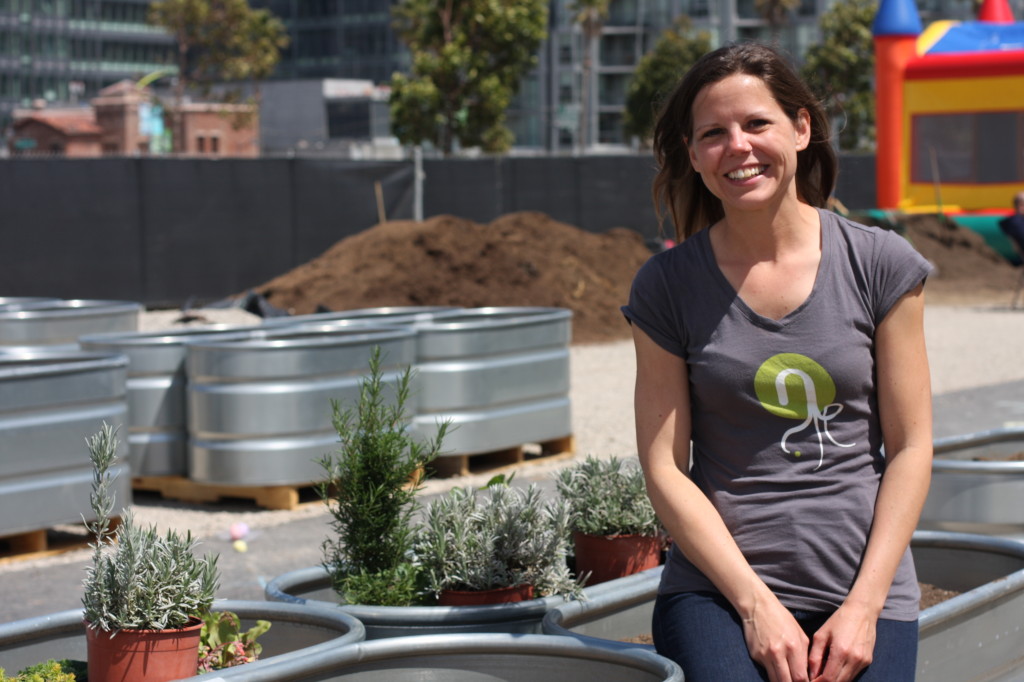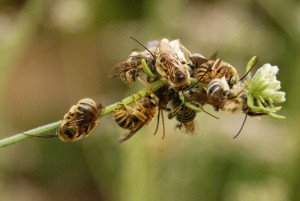When Stephanie Goodson first approached a developer about her idea to create community gardens in San Francisco, he was hesitant.
According to Goodson, the developer was concerned that people became attached to their gardens, and he didn’t want to be responsible for later tearing down something precious. After all, when the Hayes Valley Farm was bulldozed last summer to make way for a housing project, there were accompanying protests. Late last year, the city announced plans to replace another garden in Hayes Valley with mixed-use housing — Project Homeless Connect’s garden on Octavia.
While community gardens have many clear benefits, they are a hard sell in a city like San Francisco with multi-million dollar property prices. But a light bulb turned on for Goodson: what if the gardens could be portable? That is, they would roam between vacant lots around the city as spots became available. NOMADgardens — in concept — was born.
“Our win, win solution is an opportunity for developers to have a very positive impact within the neighborhood that they are influencing,” said Goodson.
It’s been almost four years since Goodson first had the idea, and the process of creation hasn’t been easy. She and other volunteers had to present their idea to city agencies, get development approvals, secure fiscal sponsorship as a project with the SF Parks Alliance, prototype containers, and gain access to electricity and water for the gardens.
Their efforts culminated in April at the opening of NOMADgarden’s first community garden amidst the tall buildings and dense cityscape of Mission Bay. Inside the fenced-in area, shiny new silver containers were placed in rows on pallets, and fresh soil was piled in a mound about 4 foot high and 15 feet across.
The half-acre site has space for 220 gardeners to each rent a 2 by 4 foot container to grow whatever plants they like. NOMADgardens has leased the site for two years and at the end of the lease they will either renew if the land is still available or move to another site. Goodson said she’s already identified some possible areas in Mission Bay for relocation.
Community gardens are known for bringing neighbors together and providing a connection with nature and food. They may even be a way to address climate change locally by reducing the urban heat island, reducing some food transport, and creating a pleasing space for urbanites to walk, rather than drive their cars.

With transportable containers, and the expectation of being temporary, it’s possible that this new style of pop-up community gardens could avoid community heartache later on.
“Vacant lots are gems of opportunity to beautify waiting lands and connect the community,” Goodson said.
As of early June, 61 gardeners had signed up. It costs gardeners about $20 a month, and in addition to the space, they can participate in community-building projects at the site, including movie nights and art shows.
Goodson admits that, “Gardens don’t make money.” But the team’s business know-how “keeps the headaches to our team and not on the developer.”
NOMADgardens is raising money to design and install irrigation and to create a workshop space for demonstrations and movie nights. They also plan to create a storage area, library and coffee shop using a portable shipping container, as well as provide a “grow service.”
The grow service is for people that want to be a part of the community but don’t have time to grow their own food. NOMADgardens will take care of the plants for a monthly fee, and can even deliver the food when it’s ready. It isalso hatching a plan to create consumer products, such as pots, for plants to beautify balconies. True to community spirit, NOMADgardens plans to use a local San Francisco artist.
Goodson, a designer and owner of her own design consulting firm, is also looking to the future. She’s making relationships with other developers and thinking of ways to incorporate gardens into future building designs. She’s talked with developers and non-profits across the country — from Las Vegas to Georgia to Hawaii.
“Our goals are huge,” she said. “We want to spread Nomad love everywhere.”
Autumn Sartain is a Bay Nature editorial intern.





